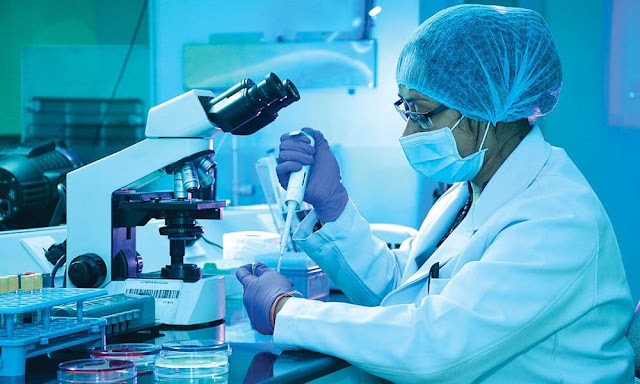 |
| Diagnostic Radiopharmaceuticals and Contrast Media |
Diagnostic imaging plays a vital role in modern medicine by enabling physicians
to see inside the human body in a completely non-invasive manner. Two key
technologies that support advanced diagnostic imaging are radiopharmaceuticals
and contrast media. These agents help highlight specific tissues, organs, or
biological processes, producing better quality images for more accurate
diagnoses.
Radiopharmaceuticals
Radiopharmaceuticals are radioactive compounds used in nuclear medicine imaging
procedures like nuclear scans. These specialized drugs contain radioactive
tracers that emit gamma rays or positrons that can be detected by specialized
cameras and computers to form images. Careful selection of the radiotracer
allows physicians to target specific organs or systems. Some common types of
radiopharmaceuticals and their uses include:
Technetium-99m (99mTc)
99mTc is one of the most widely used radioactive medical isotopes due to its
low radiation dose and gamma ray emissions well-suited for detection. It is
often used to trace blood flow and evaluate organs like the heart, lungs,
brain, and kidneys. Common procedures using 99mTc include bone scans,
myocardial perfusion imaging, ventilation/perfusion lung scans, and renal
scans.
Fluorodeoxyglucose (FDG)
FDG is a radiolabeled sugar molecule used in positron emission tomography (PET)
scans. Cancer cells and areas of infection accumulate more glucose than normal
tissues, so FDG helps identify tumors, determine cancer stages, and evaluate
treatment responses. It is commonly used as part of whole body PET/CT oncology
scans.
Iodine-123/Iodine-131
Diagnostic
Radiopharmaceuticals and Contrast Media forms of iodine like I-123 and
I-131 are frequently used to evaluate the thyroid gland and detect cancers. The
thyroid naturally accumulates iodine, so these agents clearly outline the shape
and function of the thyroid as well as potential tumors. Thyroid scans using
radioactive iodine are an important diagnostic and treatment tool for thyroid
disorders.
Radiopharmaceuticals are carefully designed and regulated to be safe and
selectively highlight target tissues while minimizing side effects. They have
revolutionized the non-invasive diagnosis and management of countless medical
conditions.
Contrast Media
In many medical imaging techniques like CT scans, MRI scans, angiograms, and
ultrasound exams, contrast agents or dyes are injected or ingested by the
patient to improve visualization of internal structures. These contrast media
help differentiate between tissues based on their absorption and perfusion
characteristics. Some major classes of contrast media include:
Iodinated Contrast Agents
Iodine-containing contrast media are the most widely used intravenous contrast
agents. They are essential for CT scans where they increase tissue contrast by
altering the x-ray absorption of iodine-enhanced organs and vasculature.
Iodinated contrast allows excellent definition of blood vessels and internal
organs like the kidneys, liver, and spleen on CT imaging. Patients may
experience minor side effects like nausea or an allergic reaction in rare
cases.
Gadolinium Contrast Agents
Gadolinium-based contrast media are important for contrast-enhanced MRI scans.
These paramagnetic contrast agents shorten the T1 relaxation times of
surrounding protons, making enhanced tissues appear bright white against other
tissues. This improves visualization of suspected lesions, blood vessels, and
pathology in the central nervous system, musculoskeletal system, breasts, and
other areas on MRI images. Gadolinium agents rarely cause side effects but
their long-term safety profile continues to be evaluated.
Ultrasound Contrast Agents
Microbubble-based ultrasound contrast media contain gas-filled microspheres
that oscillate more than surrounding tissue in response to ultrasound waves.
They are administered intravenously to improve visibility of blood flow,
characterize masses, and aid image-guided biopsy and ablation procedures. Areas
perfused by contrast agent-filled blood appear notably brighter, enhancing
lesion detection on ultrasound exams of organs like the liver, kidneys, and
breast. Adverse reactions from these agents are exceedingly rare.
Diagnostic radiopharmaceuticals and contrast media have vastly improved the non-invasive
visualization of human anatomy since their discovery. Careful selection and
administration of these agents allows physicians to target specific tissues and
pathologies, providing valuable diagnostic information for the treatment and
management of disease. As imaging technologies continue advancing, new
radiopharmaceuticals and contrast materials will likely expand diagnostic
capabilities even further. Non-invasive medical imaging truly would not be
possible without these specialized drugs.
Get More Insights On This Topic: Diagnostic
Radiopharmaceuticals and Contrast Media
Explore More Related Topic: Idiopathic
Hypersomnia Treatment
